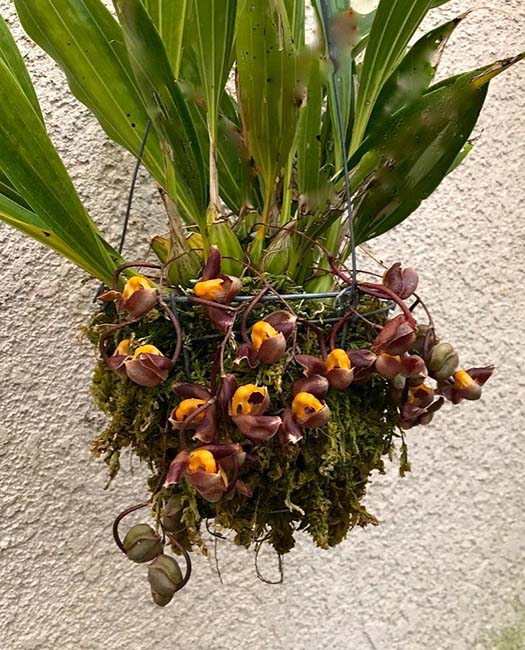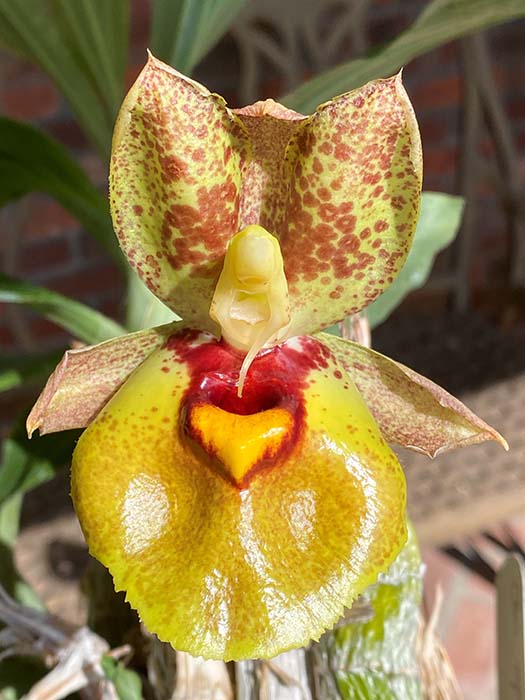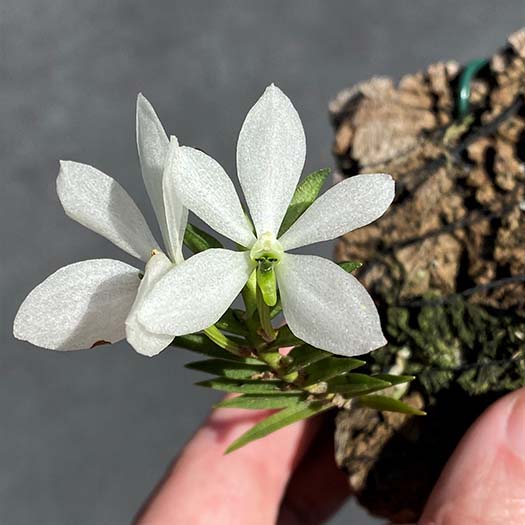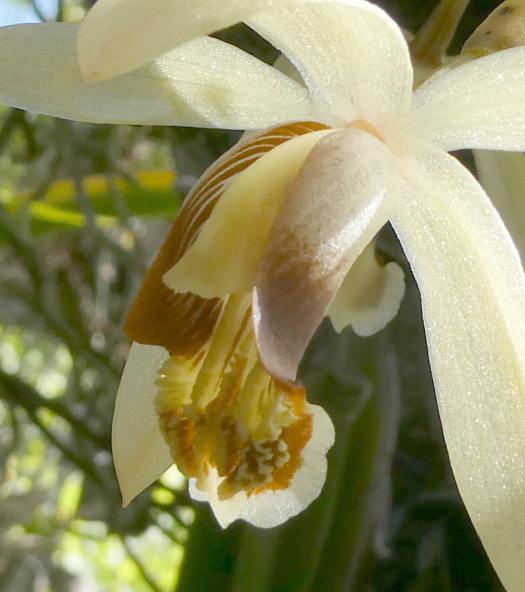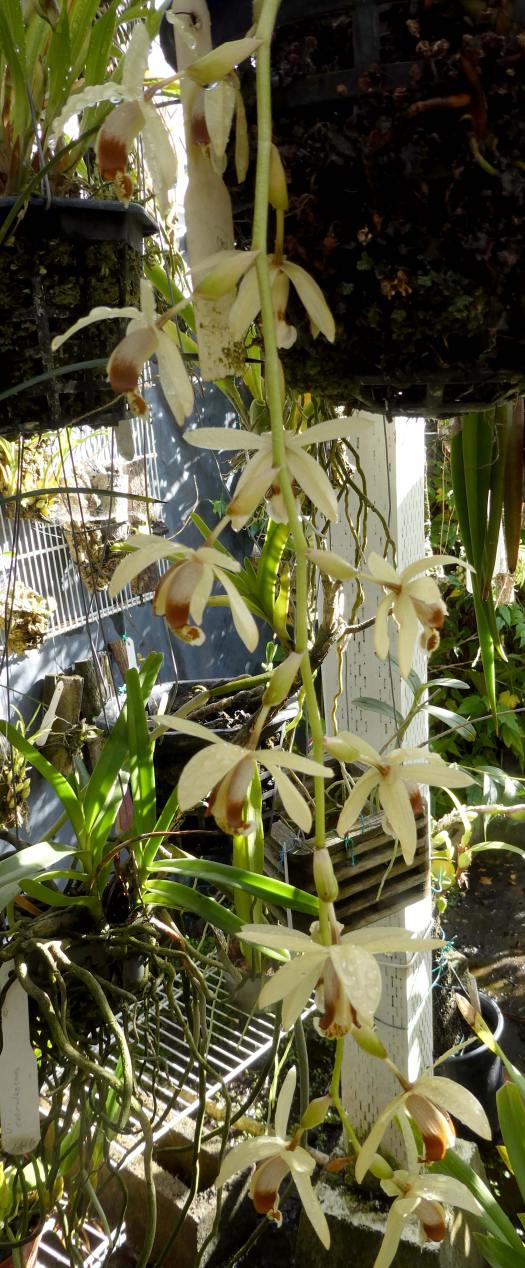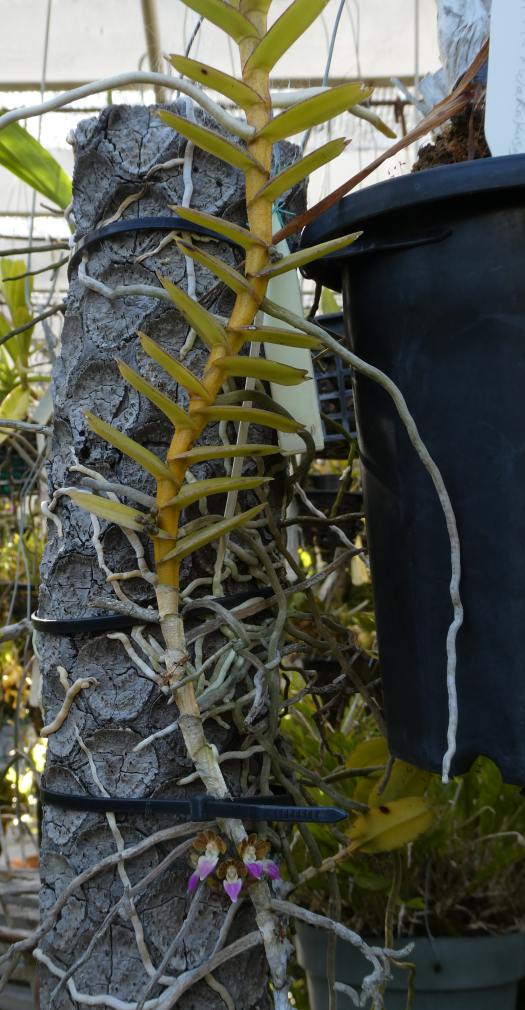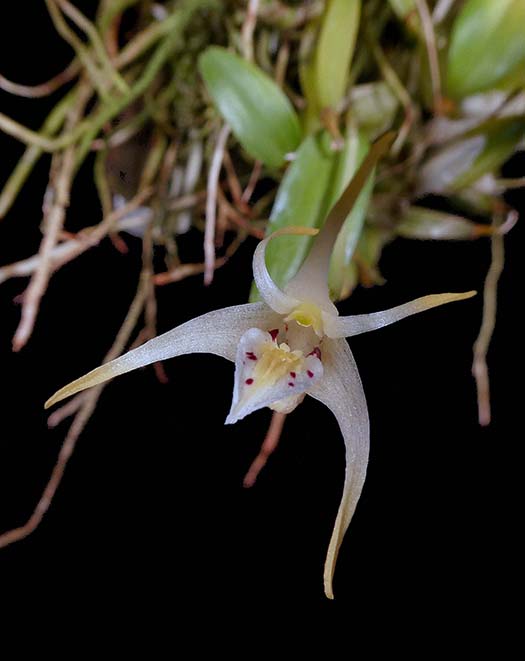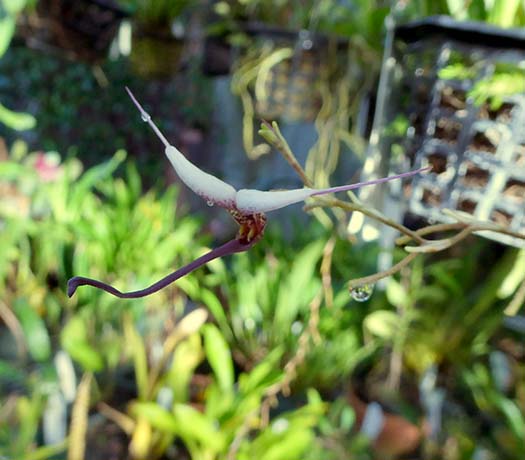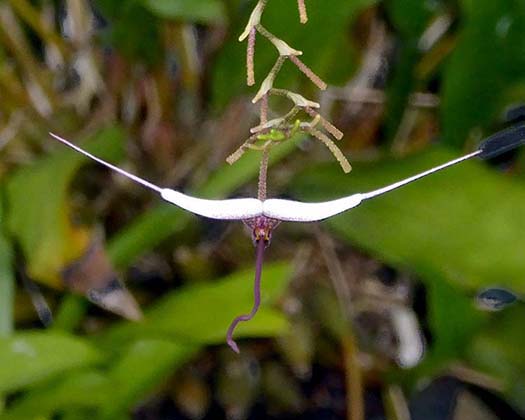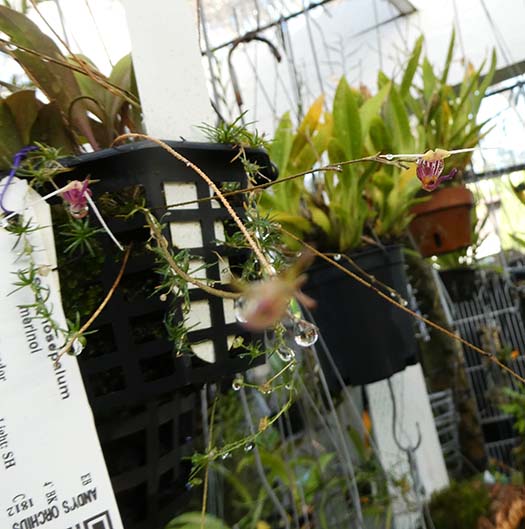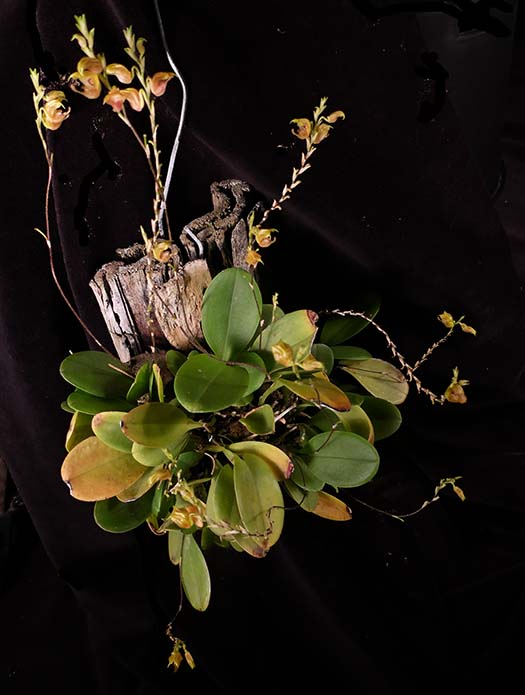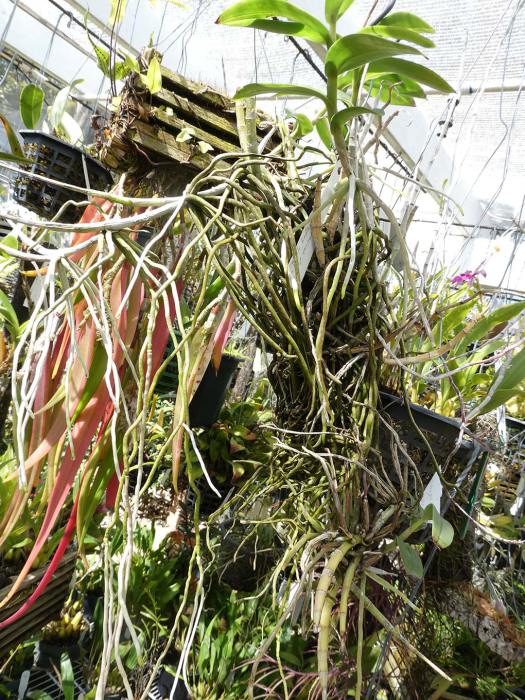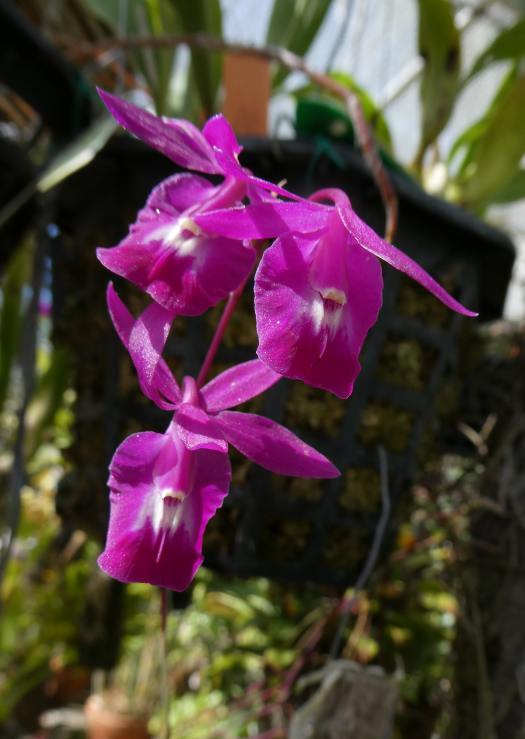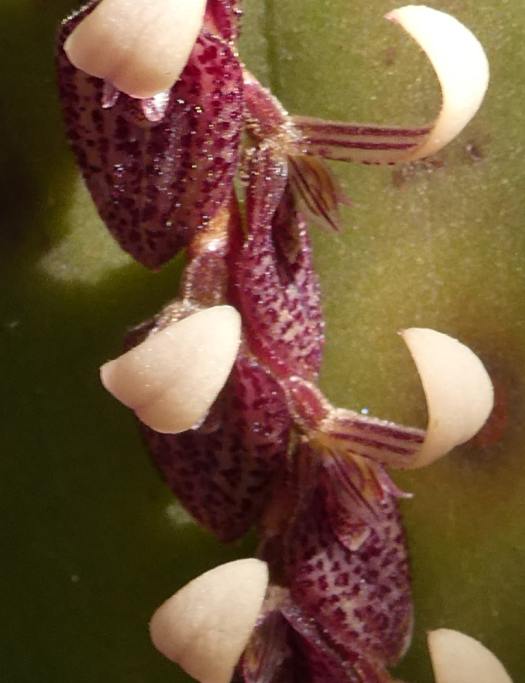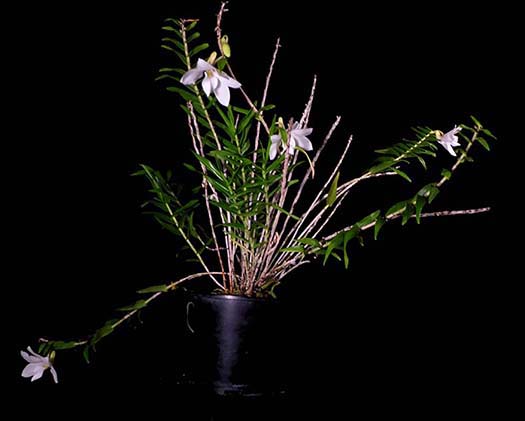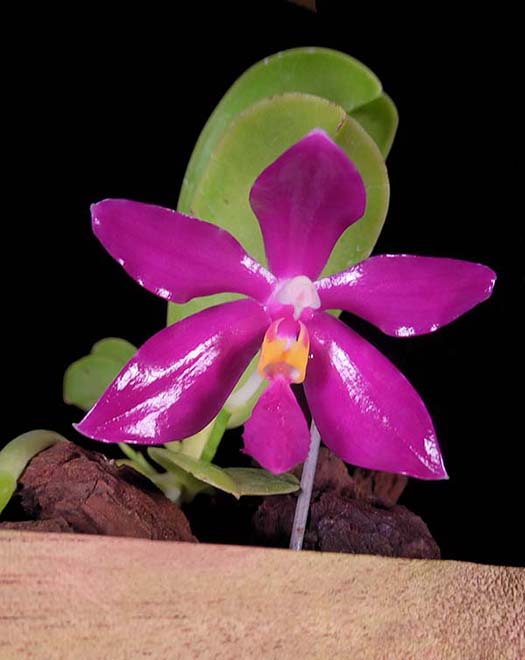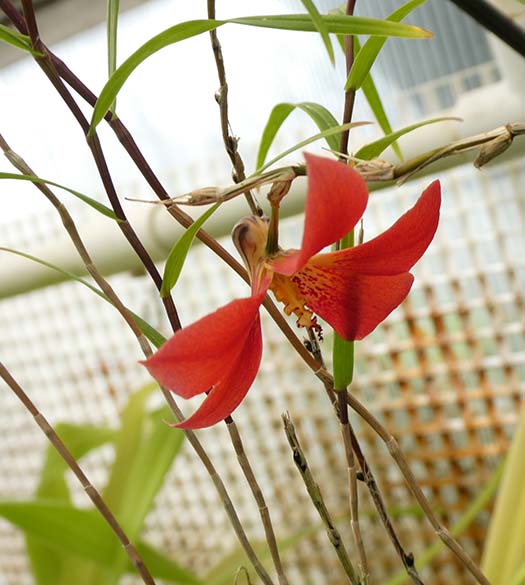November 2021
From Lynn Wiand:All orchids grown outdoors, coastal southern California |
|
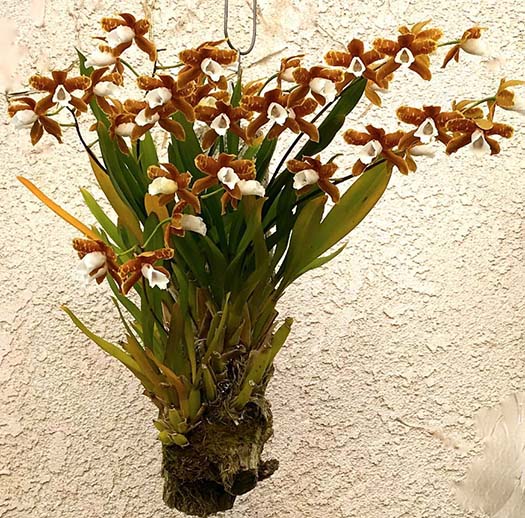
Miltonia candidaBrazil - very nice fragrance |
|
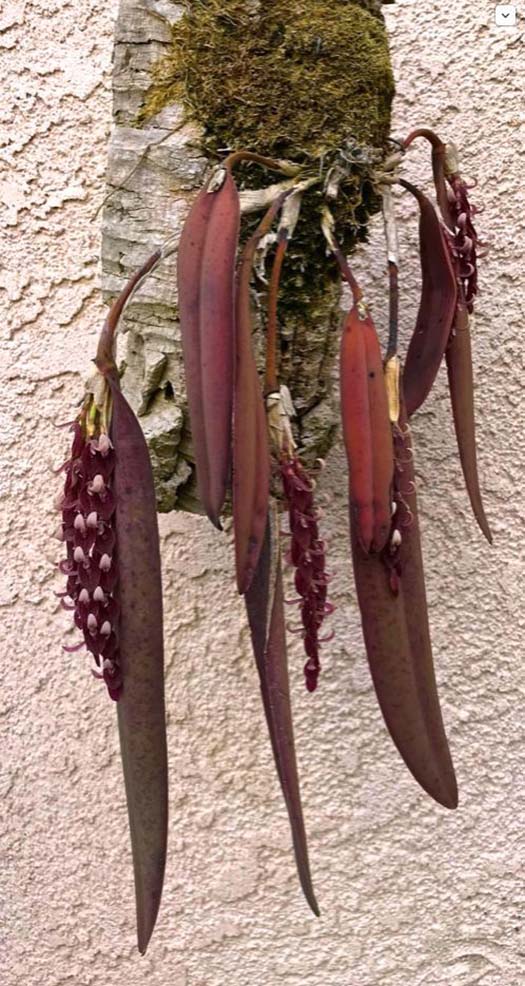
Pleurothallis strupifoliaBrazil |
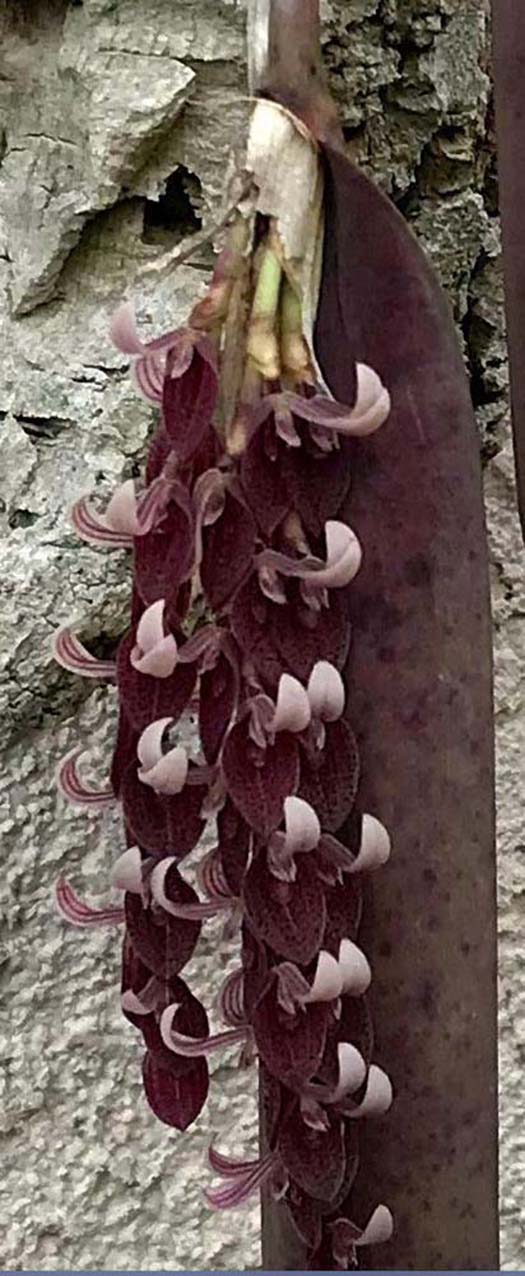 |
From Scott McGregor:All orchids grown outdoors, coastal southern California |
|
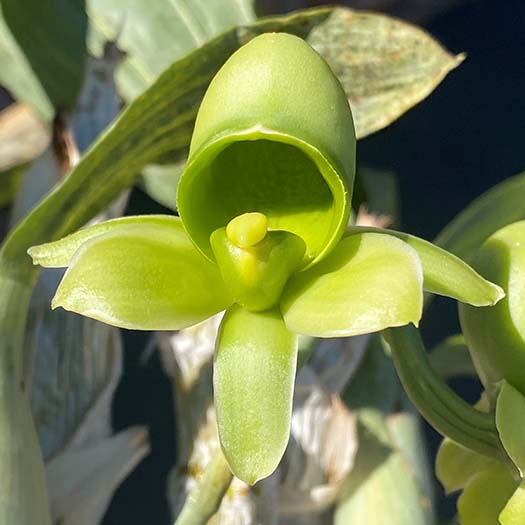 Catasetum expansumCatasetums have sexually dimorphic flowers, which means that they produce flowers of different genders that can look dramatically different. This year I got female flowers (above) and last year I got male flowers on the same plant (right). I grow these outside in an area that gets several hours of full mid-day sun—despite the delicate-looking pleated leaves, the plants seem to like it. I leave this one outside all year, but in a rain-protected space so it doesn’t get too wet in the winter. |
|
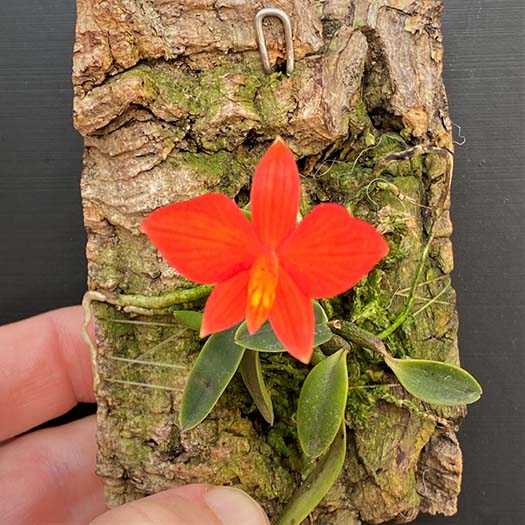 |
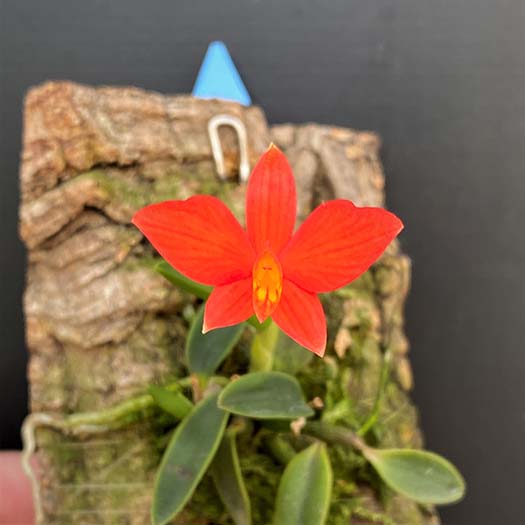 |
Cattleya (Sophronitis) pygmaeaAppropriately named as one of the smallest of the Sophronitis species. Sorry for the fuzzy pics-- this is a tough one to photograph with amateur equipment since most phone and consumer cameras boost the red and orange tones so people have more pleasing skin tones. When you have a flower that is already fully saturated red/orange, it turns into somewhat of a blur. I find Sophronitis species grow best for me mounted directly on the substrate (little or no sphagnum) with bright light and frequent water. |
|
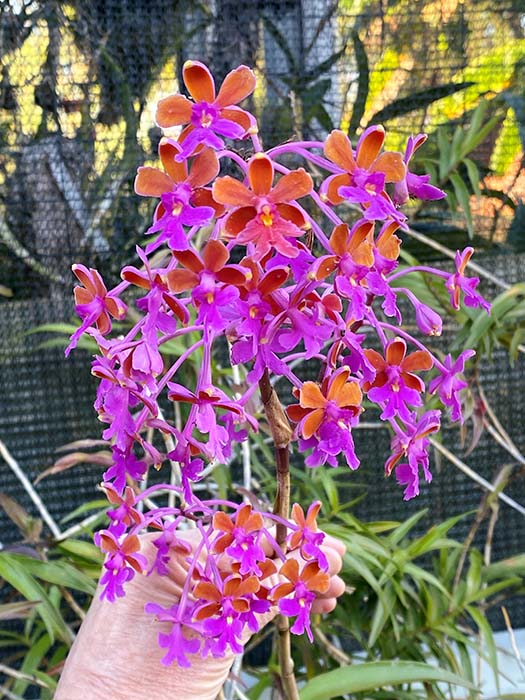
Oerstedella (Epidendrum) schweinfurthianumI like this species so much I bought another one, even though my first is already a 4’ tall, 3’ around bush! This mostly terrestrial species likes a few hours of full sun and a big pot, and rewards you with 12” x 6” bouquets of intense orange and magenta flowers at the end of each of many mature canes. It begins to bloom in July or August and holds its flowers until November or even December some years. See if you can spot the pollinated flower (it turns a uniform red/orange). |
|
 |
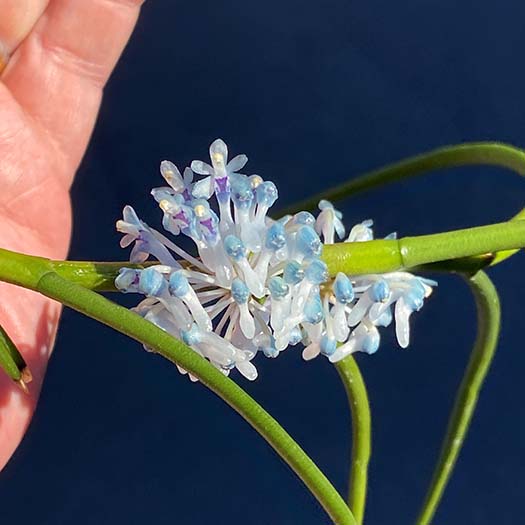 |
Cleisocentron merrilianumAlways searching for true blue orchids and this is one of the best—C. merrillianum is the terete species from Borneo (the semi-terete species is C. gokusingii). These pics are straight out of the camera—no color editing, just cropping. |
|
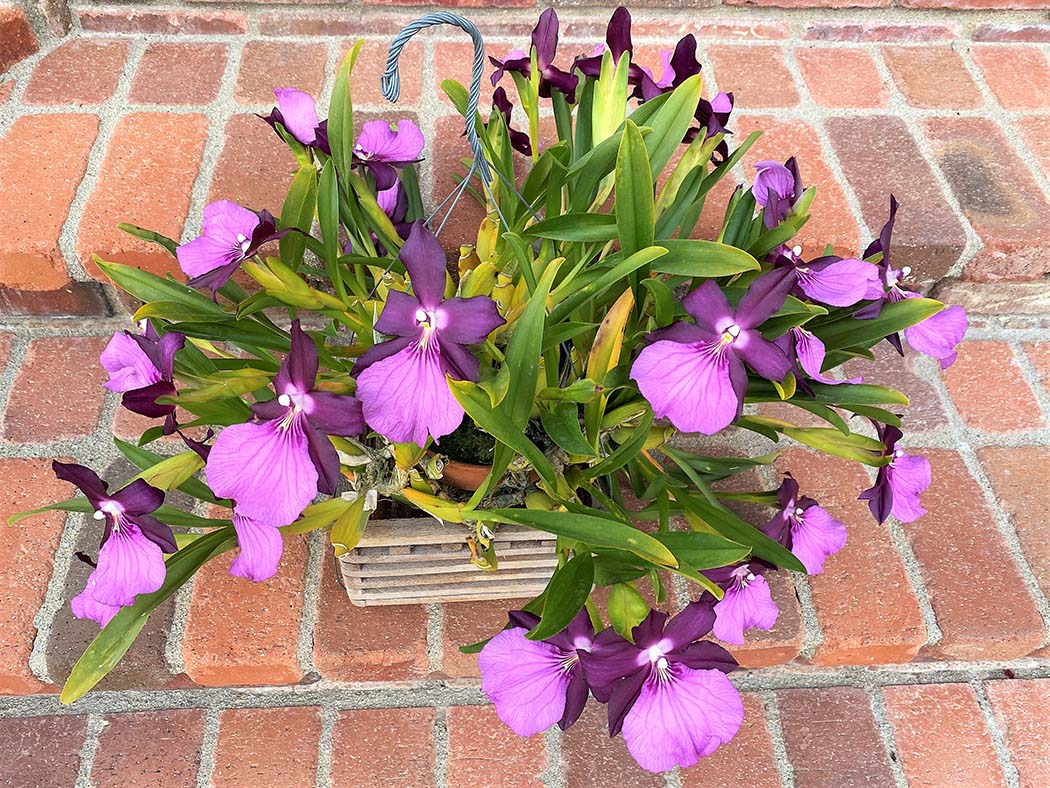 |
|
Miltonia morelianaHow can you not grow M. moreliana? Easy and tolerant, rapidly grows into a specimen, large 4” purple flowers, fragrant flowers last a month or more-- what’s not to like? |
|
 |
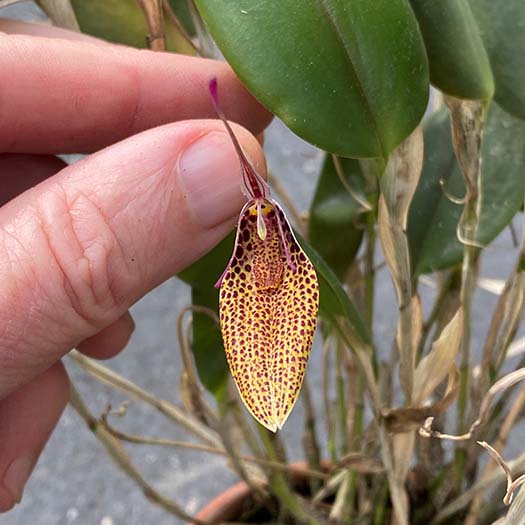 |
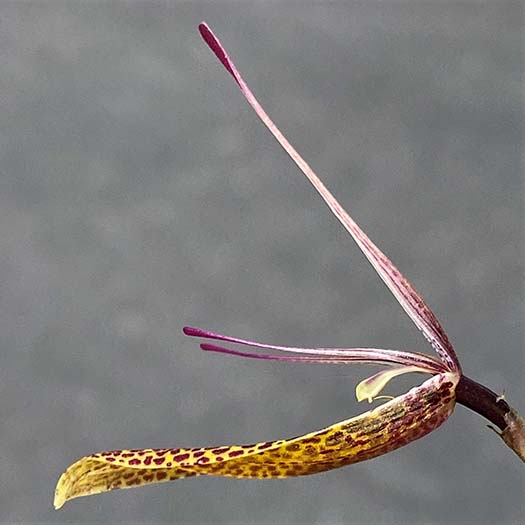
Restrepia antennifera (spotted form)One of the easier Restrepias—this one comes in spotted and the more common striped form. I see two eyes and a big bulbous nose! |
 |
 |
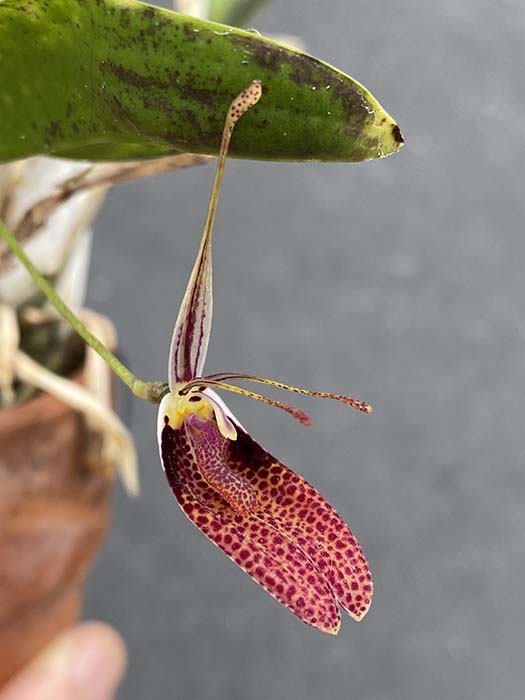 |
Restrepia sanguineaWith the cooler weather, it is Restrepia season! This one is named for its blood-red color. |
|

Restrepia contortaWith the cooler Autumn evenings, the Restrepias are starting to perk up and flower. |
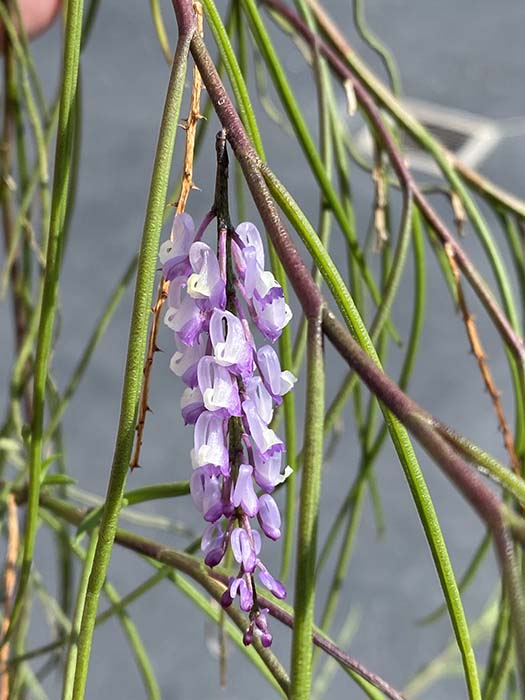
Schoenorchis juncifoliaI’ve really come to like this species—it flush blooms once per year or so, but sporadically blooms throughout most of the year so usually has a miniature wisteria-like pendant spike or two. With the long, terete, pine-needle-like leaves, it looks nice even out of bloom. |
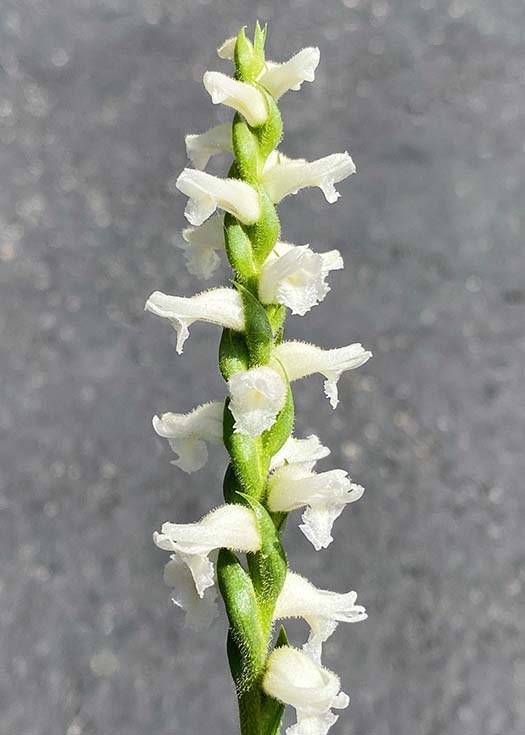 |
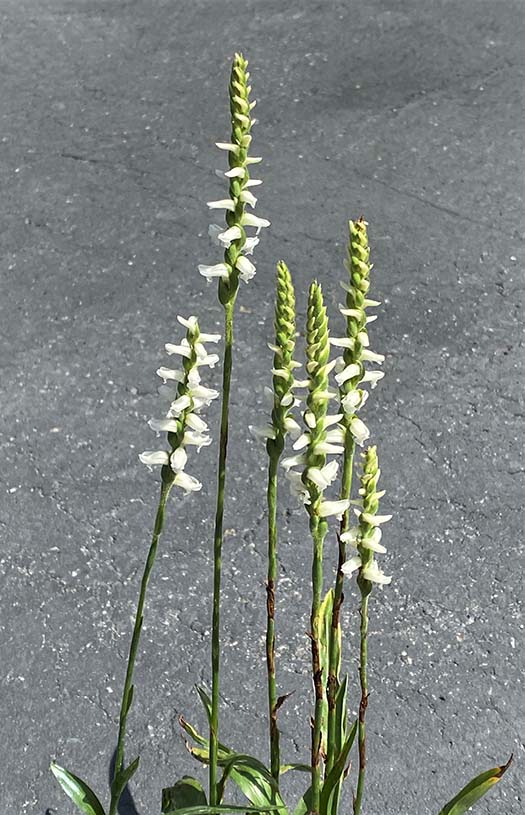 |
Spiranthes odorata 'Chadd's Ford'Commonly called “ladies tresses”, and native to the Southeastern US from Texas up through Delaware. An easy terrestrial with fragrant white flowers. If you let the flowers self-pollinate and go to seed, you’ll find this sprouting everywhere in your collection. |
|
 6).jpg)
Sobralia (not) macraOriginally sold as S. macra, but now determined to be an unidentified species. The plants are narrow leaved and quite small for a Sobralia, only about 14” tall. It starts the flowering season with a few flowers emerging from the top of mature canes (above, like most Sobralias), but then does most of its blooming from short, leafless spikes emerging from the bottom of the plant (right) and probably resting on the ground. Maybe supporting two different pollinators? |
 5.jpg) |
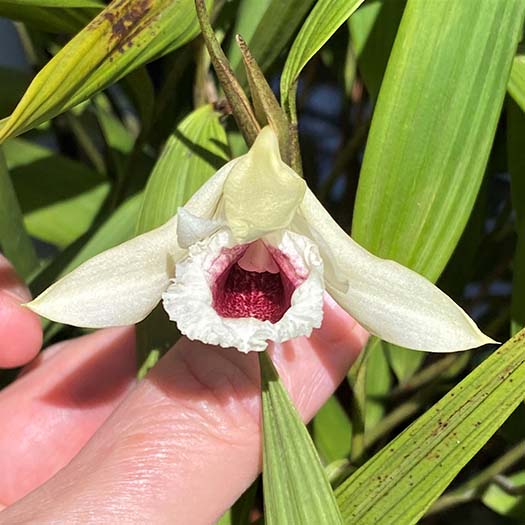 |
|
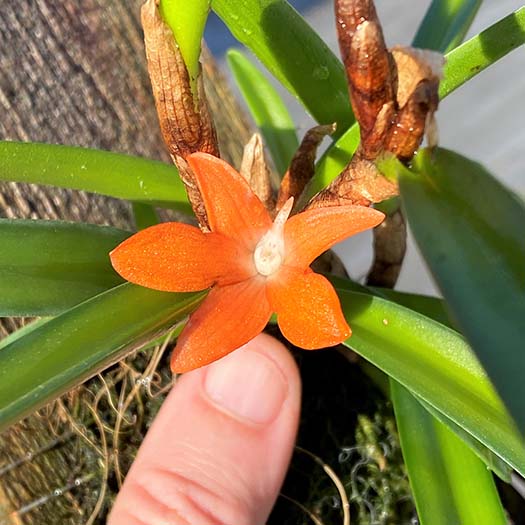 |
Ceratostylis retisquamaA new one for me and blooming for the first time with a few flowers. The web says this grows “warm to hot” in the Philippines at altitudes less than 500 meters and Andy lists this as 58F minimum, so hopefully it will make it through the winter! |
From Roberta Fox:
|
|
Outside in the Back Yard: |
|
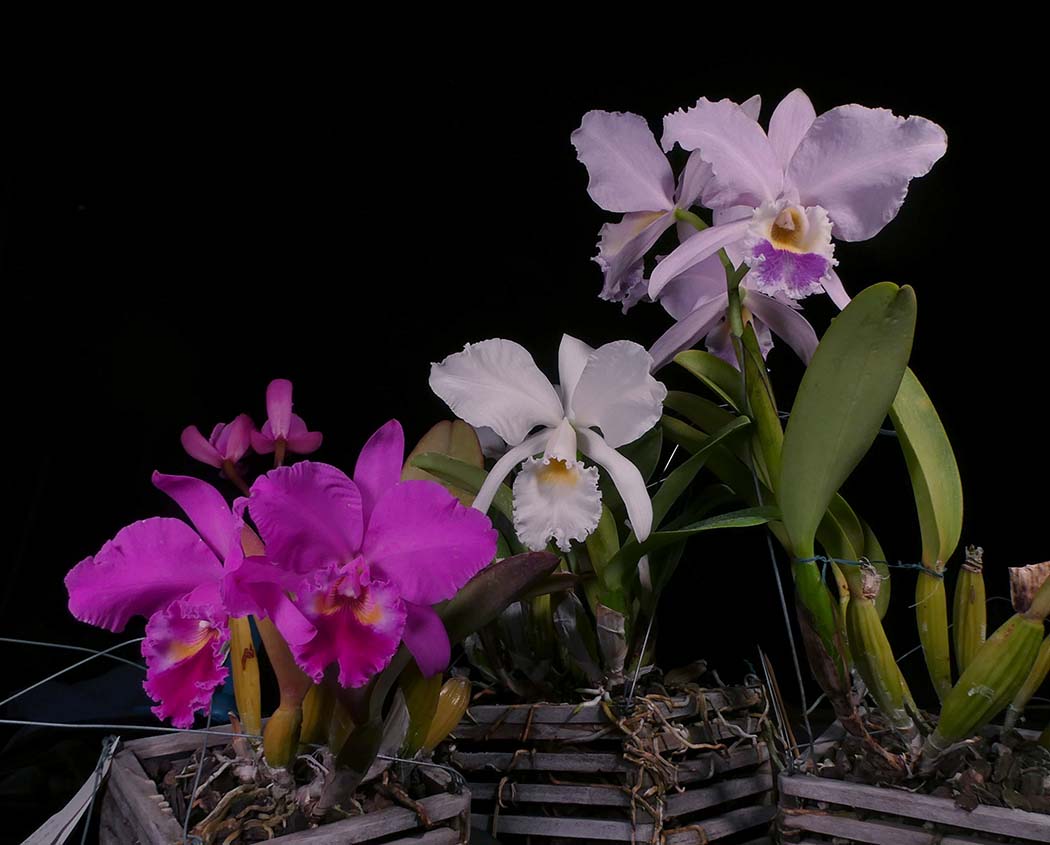 |
|
Cattleya labiataA "family portrait". All in one month, I had the rubra, alba, and coerulea forms of this beautiful species in bloom. The alba is classic shape for the species, flowers about 5 inches. The coerulea was line bred from select parents, with 6 inch flowers, and wider petals. The rubra is smaller, flowers only about 4 inches, but very round. It has wonderful form from a human aesthetic point of view, but doesn't look like the species. I am sure that a pollinator would not recognize it. (It is a selfing of a cultivar with German and Brazilian awards, according to its tag) Or, it is mislabeled and is really something else. (Would not be the first time that has happened) |
|
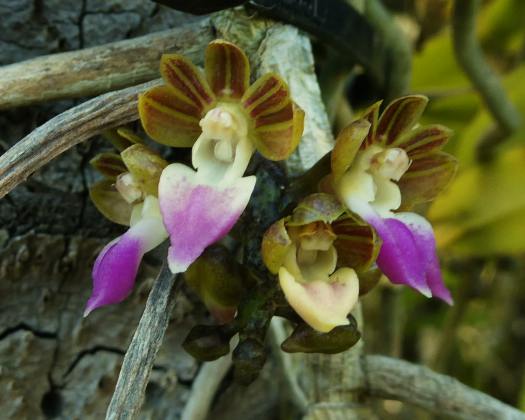 Pelatantheria insectiferaThe Vandaceous plant has rambled around the mount. Usually the cute little flowers are tucked in the leaves but this group sprouted in a leafless area, making them much easier to photograph. This is a SBOE $7.50 special that has grown very vigorously. |
|
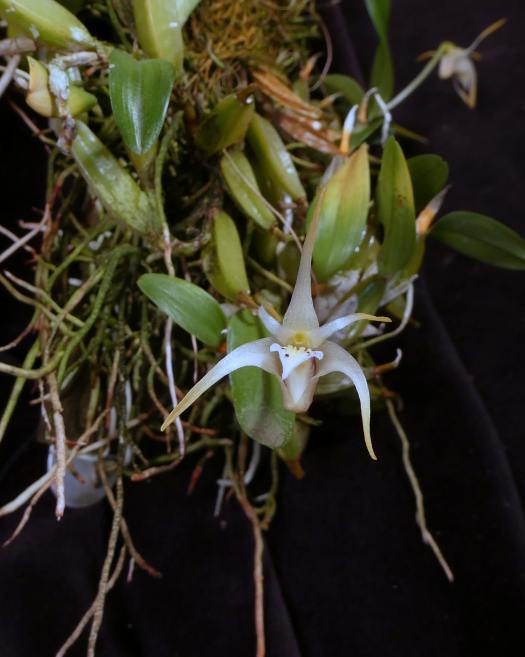 |
|
Diplocaulobium (Dendrobium) stelliferumLast year I got a nice flush bloom, this year only two flowers. It seems to bloom only once a year (unlike other Diplocaulobiums). What makes this species distinctive for the genus is the flower life. The flowers of most Diplocaulobiums last a day at best, usually less. If you blink, you have missed them. On this one, the flowers last 4 to 5 days. The photo on the left was taken on October 15, the one on the right (same flower) was taken on October 19. The next day the flowers just started to collapse, were done on the 21st. |
|
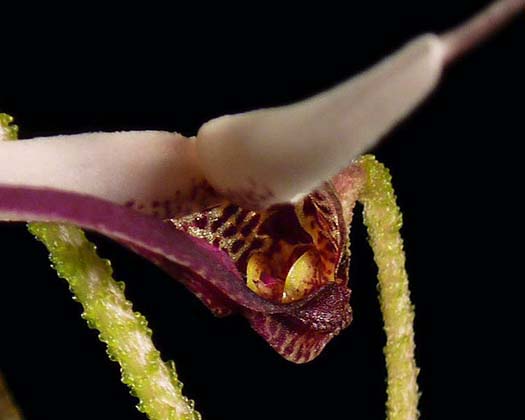 |
|
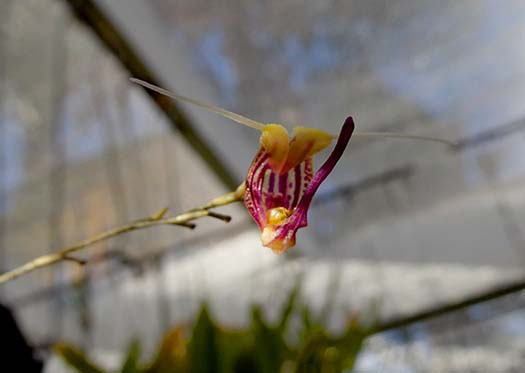
Scaphosepalum merinoiSimilar in form to Sspm. gibberosum, but much smaller. |
|
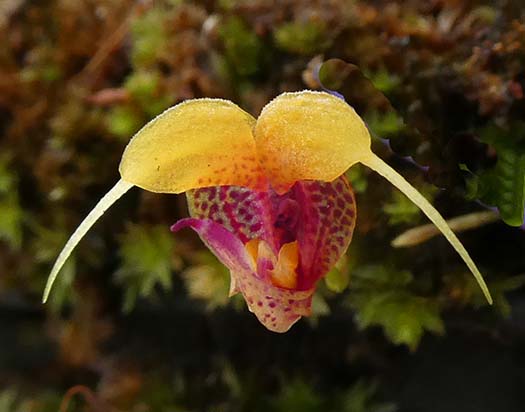 |
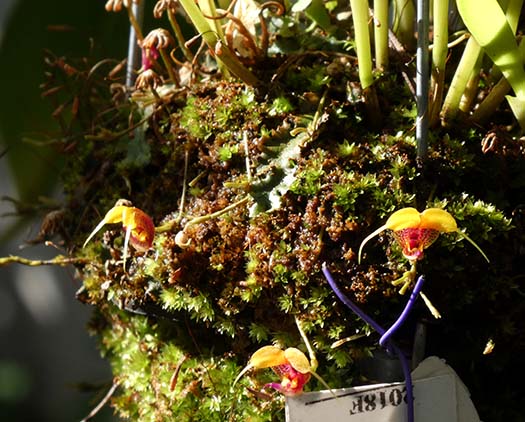 |
Scaphosepalum swertifolum ssp. exiguumThe scapes bearing the flowers are short, but still produce multiple flowers in sequence |
|
 |
|
Scaphosepalum verrucosumThis plant is perpetually in bloom. It's another $7.50 special that has done very well. It took awhile for it to get well established, but once it started producing multiple spikes, it has been going non-stop. |
|
 |
|
 |
|
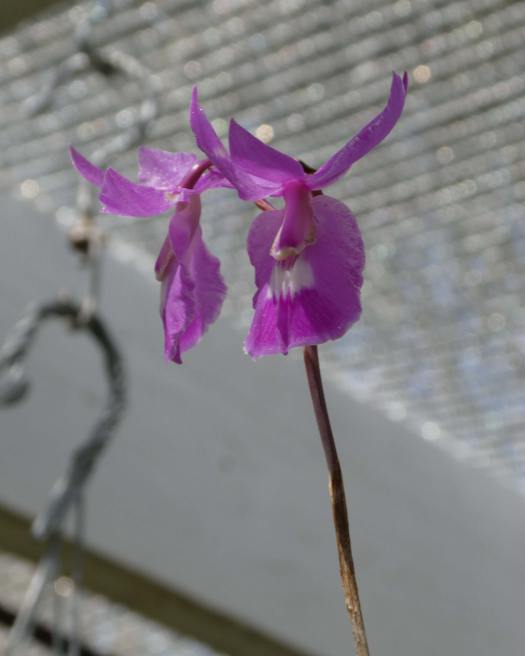 |
|
Barkeria lindleyana ssp. vannerianaNative to much of southern Mexico and Central America. I have learned (the hard way) not to cut the spikes after the flowers drop - it is easy to cut too far down, into live tissue. I wait until the following year, when it is ready to bloom again, then the top dead part is brittle and snaps off easily. The photo on the right shows the copious root system. Originally it was mounted, but the mount eventualy rotted away. I just put a zip tie through the root ball to hang it. Barkerias need to have their roots free, they hate pots. |
|

Barkeria scandensNative to southern Mexico. I got this as a bare-root keiki a bit over two years ago. This is its second blooming, and gets better as it gets bigger. I love the brilliant color saturation. |
|
Laelia pumila 'Black Diamond'A two inch flower on a rather scrawny three-inch plant, so a great flower-to plant ratio. The plant grows very slowly... I hope for it to grow multiple leads, to get a better display. |
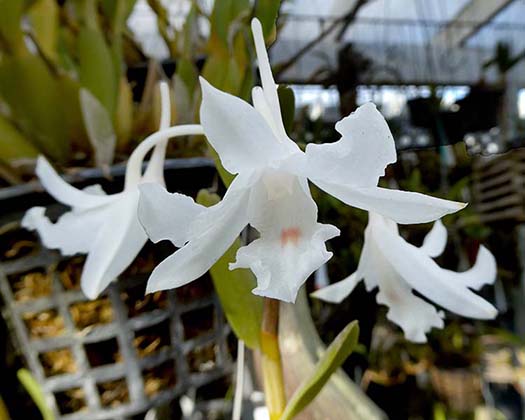
Dendrobium virgineumNative to the Himilayas, China, and southeast Asia. It is semi-deciduous, but I don't particularly dry it out, Being mounted, it dries quickly and that clearly is sufficient for blooming. |
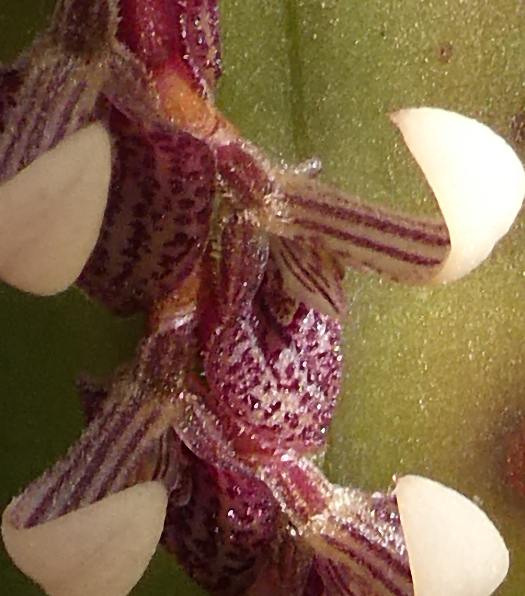 |
|
Pleurothallis strupifoliaMine is blooming too... Here is a close look a the fascinating flowers. |
|
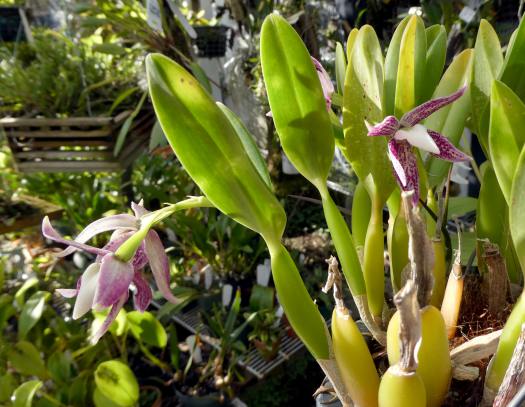 |
 |
Prothechea garcianaThe flowers are non-resupinate (lip at the top). Flowers are long-lasting, but they fade as they age, so color saturation is best shortly after they open. The plant has many more buds, but seems to be opening them just a few at a time. |
|
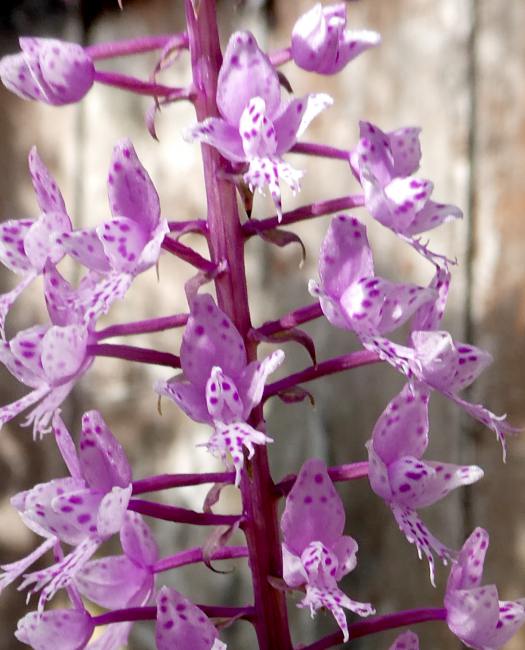
Stenoglottis longifoliaThis African terrestrial is an extremely reliable bloomer. The rosettes of leaves emerge during the spring and summer, then the spike opens slowly from bottom to top. By the time the last flowers are opening, in about two months, the leaves are almost gone. It doesn't have much of a dormancy. The new growth starts very shortly after the spike and leaves die back, so I water it all year. |
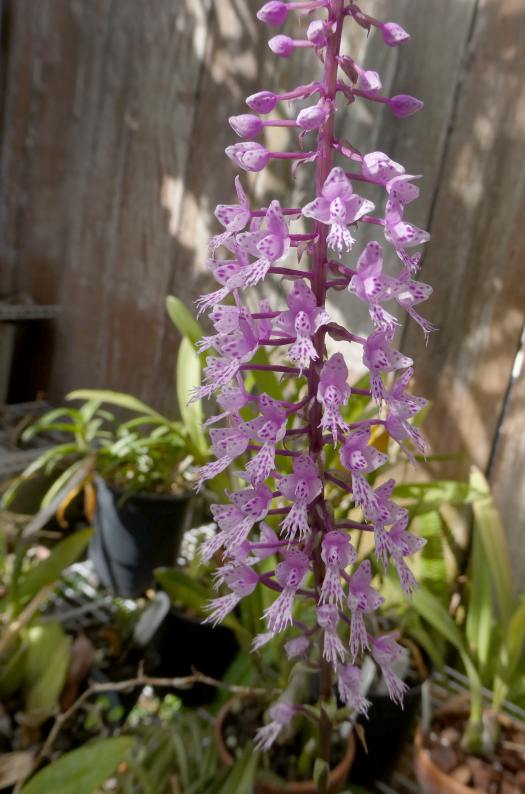 |
In the greenhouse... |
|
Dendrobium auriculatumFlowers are produced on and off much of the year, blooming from both leafed and leafless canes. It does need to grow on the warm side, so in the greenhouse. |
|
 |
|
